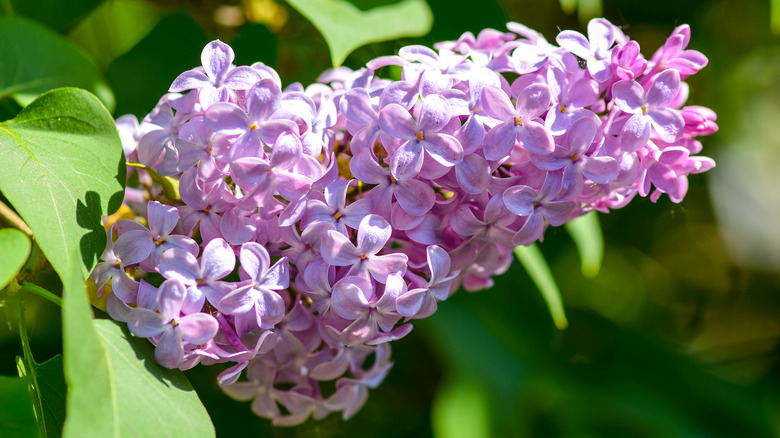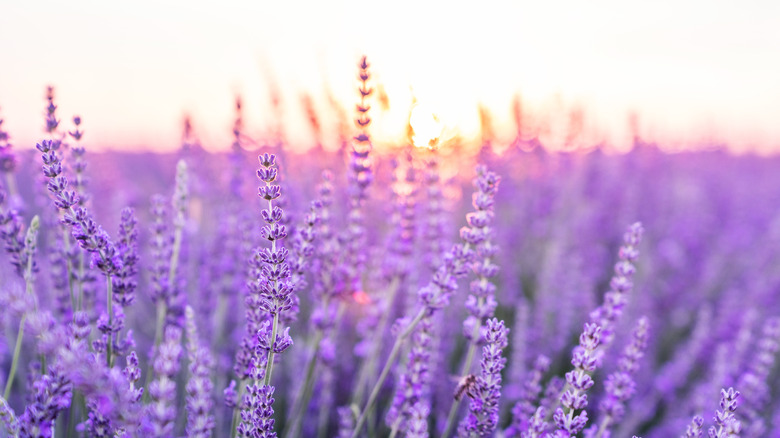Lilac Vs. Lavender: How The Plants Differ
The wonderful world of flowers and plants: a realm that only grows increasingly confusing the deeper you dive into it. On the surface, flowers seem fairly straightforward. We know all about roses, tulips, and lilies, and other plants like lavender are becoming more and more popular, too. We even know certain facts about them, such as lavender's affects on human hair or lavender oil's impact on our skin. We even associate flowers with the colors in which they grow. Lilac, for example, is a staple color in this fall's fashion scene.
While we know a lot about flowers, there's a lot we don't know. It's the typical case of the iceberg, where we've scratched the surface but have a whole lot more to uncover. Today, we're differentiating between lilac and lavender, the two purple plants that everyone loves for their warm colors, their sensational scents, and their aesthetics.
A considerable difference between lilac and lavender is the latter's use in tea and cooking, while the former remains relegated to aesthetic flower arrangements (via Difference 101). This is largely because lilac is poisonous when consumed, while lavender is an aromatic plant that perfumes teas and baked goods beautifully.
Lavender is good for more than just tea
In addition to their consumptive differences, lilac and lavender are different at the genus level, too. According to Viva Differences, lavender is part of the mint family of plants, and lilac is a member of the olive family. In fact, lavender's scientific name is Lavandula, and it belongs to the Lamiaceae family of mints (via Difference 101). Lilac, then, is scientifically named Syringa Vulgaris and belongs to the Oleaceae family of olives.
Viva Differences explained, too, that lavender is often used for its essential oils, while lilac is often used in herbal medicine practices. In this way, they're different because the lilac's flowers are used while the lavender itself isn't used, only its extruded oils. Still, lavender petals are used in other applications, such as baking.
Lavender comes from eastern Africa, the Mediterranean, northwest Asia, and some parts of Europe (via KnowsWhy). Meanwhile, lilac natively grows in southeastern Europe and eastern Asia. Neither plant is natively grown in the Americas. Their purposes vary depending on the region in which they're grown, and their aromas can change based on this, too. Generally, lilacs have a much stronger scent than lavender, with the former smelling of roses mixed with vanilla, while the latter smells light and perfume-like (via Difference 101).

